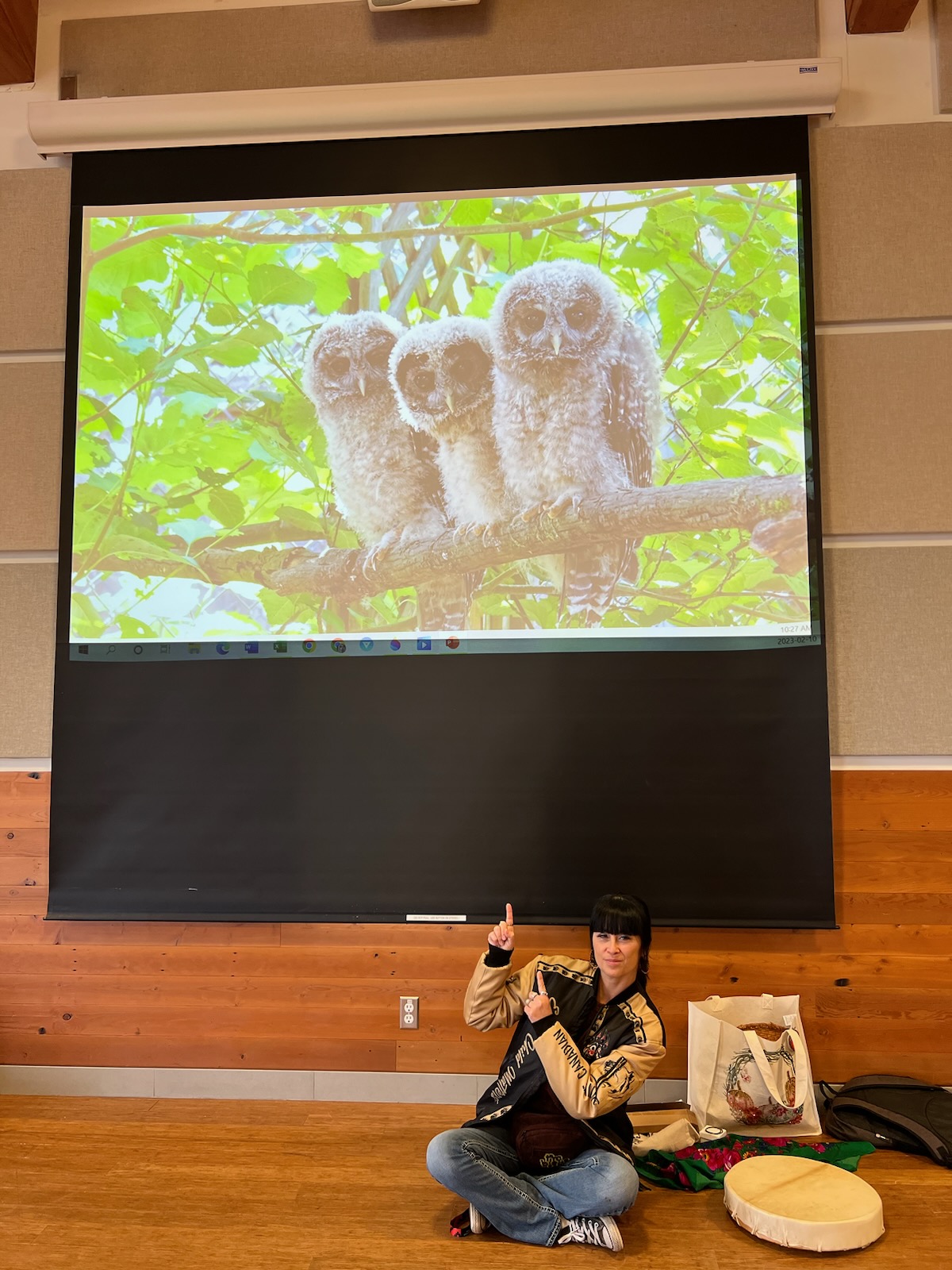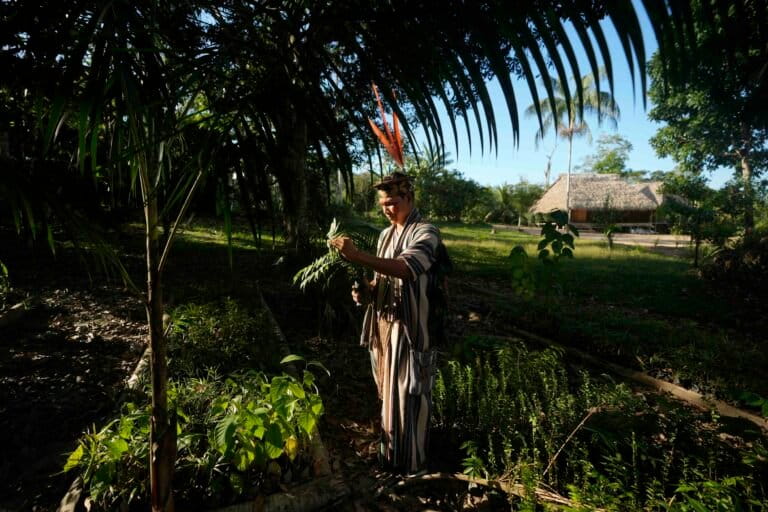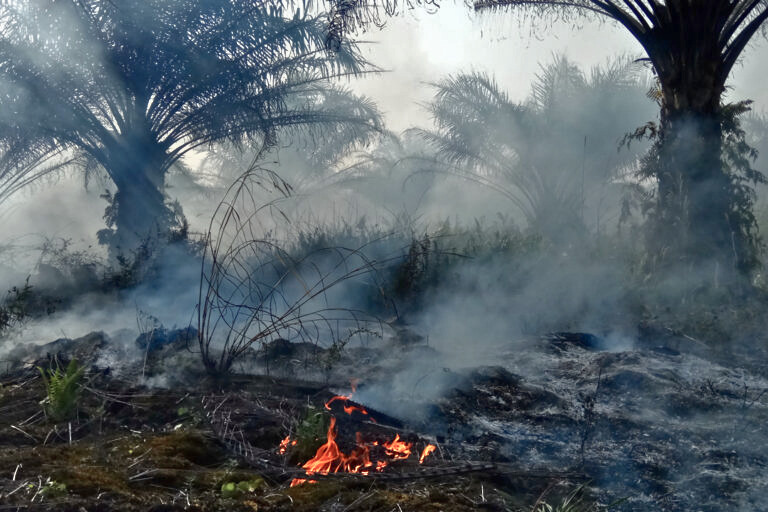- The northern spotted owl population in British Columbia has declined precipitously since pre-colonization. Earlier this month, two captive born males, which had been released into the wild last August, died, leaving just one female still in the wild.
- The owls depend on old-growth forests, particularly for nesting habitat, but logging of these forests continues to be a threat to the species — less than 3% of BC’s big-tree old-growth forest is left — along with competition from invasive barred owls.
- The owls hold deep cultural significance to First Nations, and the Spô’zêm First Nation, on whose traditional territory the last owl is found, are among those advocating for their protection and a halt to old-growth logging.
- Recent developments include indications the federal government may enact a provision in the Species at Risk Act allowing it to overrule provincial authorities in terms of spotted owl management.
A thousand northern spotted owls (Strix occidentalis caurina) once lived among the sweeping cedars and towering Douglas firs of southwestern British Columbia’s old-growth forests. Today, only one female survives.
She lives alone now within the traditional territory of the Spô’zêm First Nation. While a larger – albeit still threatened – population remains in the United States, the northern spotted owl is perilously close to extirpation in the wild in Canada.
The last owl wasn’t always alone. Last August, came a ray of hope. After 15 years of painstakingly building up a captive population by incubating eggs and hand rearing chicks, the province’s captive breeding program, established in 2007, released three captive born owls into the wild. The three males were brought to a large aviary built in the forest, near to where the lone wild female was found, and welcomed by the Spô’zêm Nation with a traditional ceremony. Though one of the owls was hit by a train some months later, and taken back to the breeding center to recover, the other two males appeared to be successfully making their home in the forest.
But early this May, nearly 7 months after they were released, both captive-born owls died. The cause of death remains unknown, but their remains and GPS transponders were found.

“They died heroes,” says Chief James Hobart, of the Spô’zêm First Nation. “How many people have now called our nation, I can’t even count, saying they weren’t even aware [of the owl’s plight] and they were saddened by the news? They want to know what they can do to help, who they need to call to support our efforts.”
Though the loss of the released owls was a severe blow, Hobart and others fighting to bring back the spotted owls and halt logging in old-growth forests aren’t giving up. “People haven’t even seen us get started yet,” he says.
Northern spotted owls
Northern spotted owls are about half a meter (20 inches) tall, with deep-brown feathers flecked with white, and large dark eyes with a pale hooked beak. They eat northern flying squirrels (Glaucomys sabrinus), bushy-tailed woodrats (Neotoma cinerea) and other small prey, which they hunt by waiting patiently on a branch, then swooping down on their 1.2-meter (4-foot) wingspan. They nest in the broken-off “chimney tops” of old snags, or in other large tree cavities where branches have broken off. To keep cool, they roost on boughs beneath the dense canopy.
The owl’s dependence on a closed forest with widely spaced big trees where they can nest, hunt and roost is why their historic distribution along North America’s Pacific coast — from northern California to southern British Columbia — matches that of the old-growth forests. The trees, some more than 25 m (82 ft) tall — in these ancient forests are hundreds, even thousands, of years old.
“If you’re amongst the old growth, which is the birthplace of our medicine … you feel vibrant yourself,” Hobart says. “You feel like you’re in some sacred place.”
But after a century of unrelenting logging of old-growth forests, less than 3% of the most productive big-treed forest is left in British Columbia, according to the 2020 report “Last Stand for Biodiversity.”
“We have radically changed the land,” says Rachel Holt, one of the report authors. “It’s undeniable.”
Since at least the late 1980s, people have known that the owls were in trouble — and that the destruction of their habitat was the driving cause. Hobart says he’s witnessed northern spotted owls virtually disappear within his lifetime.
“Back in the ’70s, you’d be walking in the woods, and an owl would follow you, or fly in front and perch on a branch, watching what you’re watching and trying to figure out why you’re in the forest,” Hobart says. He adds he remembers how when he was a child, when he was up in the mountains with his family at night, they’d hear the owls as they were sitting around the campfire.

In the U.S., where 90% of the population was historically found, the federal government listed northern spotted owls as threatened in 1990. Despite vocal opposition from loggers, lawmakers levied the Endangered Species Act and other legislation to shut down logging in vast tracts of the owls’ remaining habitat, virtually overnight.
But neither Canada nor the province of British Columbia had comparable legislation; despite listing the owls as endangered in 1986, the government allowed old-growth logging to continue apace.
By the early ’90s, the spotted owl population in British Columbia was down to fewer than 100 breeding pairs, a fifth of what the population had been before colonization. The province pulled together a recovery team, and in 1997 it implemented a management plan that, it claimed, had a 60% chance of stabilizing, and possibly improving, the population. Of the more than 350,000 hectares (865,000 acres) set aside for owls, some was in existing parks, and in much of the rest, logging was still allowed.
Meanwhile, the owl population in British Columbia continued to spiral to fewer than 30 breeding pairs by 2002, and three years later, to just 22 owls, including 6 breeding pairs.
By 2006, an independent panel of scientists decided captive breeding was necessary, and the province opened a northern spotted owl captive-breeding program, the first of its kind in the world. To date, conservationists have taken a total of 10 owls, as well as a number of eggs, from the wild for captive breeding. Though progress has been slower than hoped, the captive population is now approximately 30 owls.
Joe Foy, a campaigner with the Wilderness Committee who has been working on spotted owl conservation for more than 30 years, says the crux of the problem is that provincial governments gave forestry precedence over wildlife conservation. According to British Columbia’s Forest and Range Practices Act, timber was always the most important value of the forests, allowing provincial regulations to constrain the impact that habitat protection for wildlife could have on timber supply. That, Foy says, is why we “ended up with a broken forest, and this species almost gone.”
Hobart says the decline in owls is symptomatic of wider imbalances in the landscape. The owls are one of the species, he says, “that we consider to be the messengers from the forest, from the water, from the sky.”
Logging is not the only reason northern spotted owls are now a hair’s breadth away from extirpation in British Columbia. Invasive barred owls (Strix varia), which are native to eastern North America but have been moving westward, are also muscling out spotted owls, and more frequent and intense forest fires due to climate change are adding pressure.
But logging was undoubtedly the catalyst for their decline, and the destruction is also impacting other species. Southern mountain caribou (Rangifer tarandus caribou) depend on lichen in old-growth forests for food in the winter. The marbeled murelet (Brachyramphus marmoratus), an endangered seabird, needs old-growth trees for nesting — and these are still being cut down. A recent study showed that logging even impacts salmon.
The old trees also store incredible amounts of carbon in their massive trunks and root systems; preserving standing forests is considered one of the cheapest and simplest ways to fight climate change.

Fixing forests
Whispers of change are in the air — but time is critical.
An “Old-growth Strategic Review,” commissioned by the British Columbia government in 2020 and carried out by two foresters, called for a “paradigm shift” in forest management. The authors laid out 14 recommendations, including immediately deferring logging on the most at-risk forests, greater Indigenous involvement in decision-making, and greater emphasis on ecosystem health.
And in February this year, the province announced new approaches to forest management, including funding for old-growth protection, greater involvement with First Nations, and a change in language that will now allow other land uses, including conservation, to be valued equally with timber.
While these changes are largely seen as positive, many, including Holt, say the policies need to be turned into action.
“Very little of substance has changed,” she says. “There is the potential for lots to change rolling on from what we’ve seen, but it hasn’t happened yet. So, that is the problem.”
In 2021, for example, the province announced logging deferrals on some of the most at-risk old-growth forests, indicating logging would be paused until First Nations could be consulted on management plans. But Holt points out that problems with the way the government enacted deferrals meant that very little of those areas actually received protection — in fact, logging companies have already targeted some of those areas.
Hobart has seen the same thing in Spô’zêm territory, where the nation and the Wilderness Committee successfully petitioned the government to enact deferrals in the Spuzzum and Utzlius watersheds after the last spotted owls were found there in 2019. But, Hobart says, those deferrals were voluntary, and he’s since seen companies pulling big trees out of those areas. “And then there’s nothing you can do to bring them back,” he says. “That’s the sad part, these trees are three or four hundred years old.”
And as recently as 2022, the Wilderness Committee documented 452 cutblocks — areas where logging is pending or already approved — overlapping fully or partially with areas in the spotted owl recovery plan dubbed critical habitat. Five of them were even near areas slated as possible owl release sites.

Holt says with so little old-growth forest left, action is desperately needed — and for that to happen, progressive thinkers within government need to be given a mandate for change. That would include managing forests for carbon, biodiversity and water, and changing economic drivers to bring more added value to timber products and creating more jobs for the amount harvested.
“There’s a relatively short list of things we need to do and we’ve gone a little ways forward on a bunch of them, but we haven’t actually [gotten] over the line in terms of making that real change on the ground,” Holt says.
Patchworks
The British Columbia government maintains that the recovery plan is on track. Habitat is not currently a limiting factor for spotted owl recovery, wrote the provincial Ministry of Water, Land and Resource Stewards in response to questions. It said that the 280,000 hectares (692,000 acres) currently set aside for owls is sufficient for the current recovery plan’s goal of 125 pairs of wild owls (enough to support a self-sustaining population).
It also said that recovery will take time, and that current habitat protection, coupled with the captive-breeding program and efforts to control barred owl populations, are sufficient.
But Foy says they’re missing a key point: what the province’s recovery plan doesn’t account for is how the checkerboard of clear-cuts that covers the province impacts young dispersing owls.
Spotted owls mate for life, sticking in their patch of forest and often nesting at the same roost year after year. In the fall, juveniles strike out to look for territory of their own. But now the young owls are forced to cross a matrix of clear-cuts and young forests. In the open canopy, the young owls are more liable to be picked off by predators. From 2004-2006, provincial biologists tracked seven dispersing wild juveniles, all of which died. Low survival of juveniles would mean that aging adults likely won’t be replaced.
“The provincial plan doesn’t seem to have any way to get out of ‘we hatch owls and stick them in our reserves,’” Foy says. “Eventually the plan appears more like a game farm than a recovery plan.”
The Wilderness Committee, along with the Spô’zêm Nation and other partners, has repeatedly asked the federal government – which in Canada ultimately has responsibility for at-risk species – to intervene. This year, they were finally successful. In February, Canada’s federal minister of the environment, Steven Guilbeault, indicated he would recommend that cabinet enacts a rarely used clause in the Species at Risk Act, called an emergency order. If passed, it would allow the federal government to override the provincial government and halt logging in critical spotted owl habitat. At the same time, the federal government put out an updated draft recovery strategy, along with mapping of critical spotted owl habitat.
Now, with just one owl left in the wild, that intervention is more urgent than ever.
“In the past, governments…and companies have made money off the backs of a lot of different ecosystems. A lot of critters died,” Hobart says. Now, he adds, everyone has to realize that things need to change.
Bringing back spotted owls is about more than just numbers, says Lenore Baker, a member of the Squamish First Nation who works closely with Hobart on spotted owls and old-growth forest protection. It’s about restoring balance.
Baker points out the cultural significance of spotted owls to Spô’zêm and other First Nations is evident in their stories, songs and artwork. For many thousands of years, First Nations and spotted owls, as well as other wildlife, were co-stewards of the land – and any government recovery plan needs to be cognizant of that relationship, according to Baker.
“[The owls] were watching us. They were hearing our songs. They were hearing our drums. So, when they are losing that, that’s a loss to them,” she says.
Citations:
Price, K., Holt, R. F., & Daust, D. (2021). Conflicting portrayals of remaining old growth: The British Columbia case. Canadian Journal of Forest Research, 51(5), 742-752. doi:10.1139/cjfr-2020-0453
Banner image by Kyle Sullivan, Bureau of Land Management via Flickr (CC BY 2.0).














